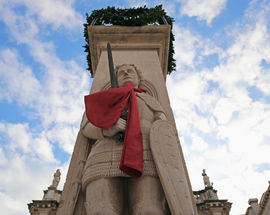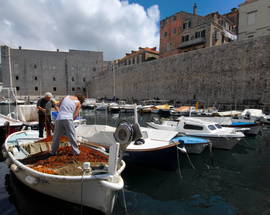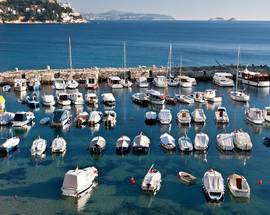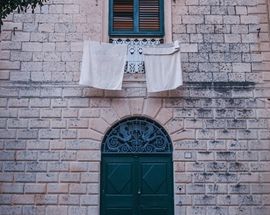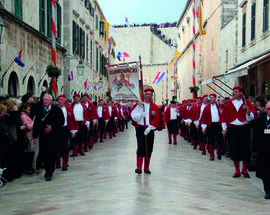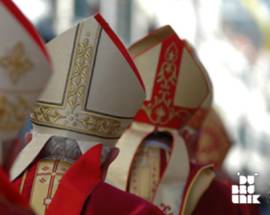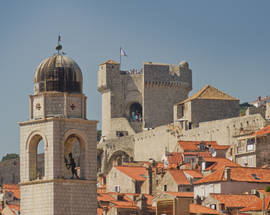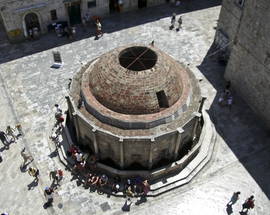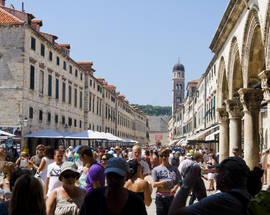Introducing Dubrovnik
Why does the city look the way it does? Why all those walls and bastions? It was first of all a refugee colony for the people of Epidaurus (today’s Cavtat), who fled from invading Avar and Slav tribes. At that time the land south of Stradun, as the main thoroughfare through the Old Town is popularly called, was an island, offering some protection from attack, but, of course, the walls began to grow up to give those first fearful citizens their shelter.
That was in the 7th century. At that time, these lands were under the protection of Byzantium. Following the Crusades, Venice took over, and then the Croatian-Hungarian kingdom. But in the 14th century, by the force of skilled diplomacy, the nobles of Dubrovnik bargained their freedom, and this became a city-state which flourished for four centuries, maintaining independence from feared invaders such as the Turks, and, indeed, cultivating profitable relations with them.
The skill of the people of Dubrovnik in trade and in many other areas led to this tiny city state, then known as the Republic of Ragusa, becoming such a powerful force in the Adriatic that it seriously rivalled Venice’s dominance in the region. And during the heyday of the city’s development, art and culture flourished, leading to a love for harmony in ones surroundings, a love of music, and a love of literature which much shaped the language of Croatian that we can hear today.
This love of beauty is visible with every step in the Old Town, this living museum and famous World Heritage site. It can be seen in the galleries, on the theatre stages, and in its annual culmination at the Dubrovnik Summer Festival. It can also be heard – this is a city of music too, of classical music, but also taking care of the folk vernacular of the coast and hinterland.
Beauty is only skin deep, and happily this will to harmony also manifested itself in a rather liberal political system which, for example, abolished slavery at a very early stage (1418). And alongside this respect for humanitarian concerns also came, naturally, the love of freedom. That’s why you’ll so often see the word “Libertas” emblazoned on everything from flags to the sides of buses.
It’s hard to believe that this miraculous freedom of the tiny Republic of Ragusa, and this economic and political might lasted all the way to the beginning of the 19th century when the Dubrovnik nobles were tricked by Napoleon to letting his armies into the city in 1806. So it’s no surprise that the sense of individuality and collective pride is still so strong. It results, happily for visitors, in a very unique, visible and well-preserved culture that’s a joy to uncover.


